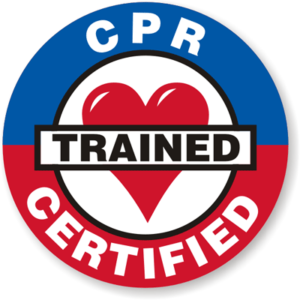
Equipment
Surf Education > Equipment >
SURFBOARDS –
A surfer on a longboard can sit much further outside while waiting for sets than the shortboard surfers, who all have to make later take-offs just to able to drop in. So when someone on a longboard, in a predominantly shortboard spot, paddles out and starts taking the best wave of every set, of course the shortboarders further inside are going to become increasingly angry the more of the good set waves they lose.
The surfer on the longboard in this situation is acting in complete disregard for everyone else in the water. There are surf spots which are understood by the local surfing populations to be “longboard spots,” and when everyone in the water is riding longboards, then the amount of waves you get comes back down to paddling ability and wave judgment.
Paddling and wave judgment skills have to be even more refined for the shortboarder, since the wave has to be far steeper and far more ready to break in order to take off, whereas the longboard surfer, again, can catch the wave further out while it is still rolling, and not near the breaking point. By the time it does break, the longboard surfer has had far more time to get his board gliding to drop in and make his bottom turn. Please have some respect for other surfers in the water.
Make sure that your surfboard is designed for the place and type of surf you are surfing. Surfboard buying guide here.
PADDLEBOARDS –
Riding the waves just took a new turn with the stand up paddleboard (SUP) surfboard. Stand up paddling uses a paddle to offer a unique experience in cutting your way through the water. As the sport’s popularity has grown, so has the market for buying paddle surfboards.
Buy a board with consideration of where you’re going to be paddle surfing to determine a good weight for a board. Windy conditions might dictate a heavier board, but in California, the trend is to go light. Think of the paddle as an extension of your body to help you stabilize and turn. Look for something 6 to 8 inches taller than you, with a large, slightly scooped oval shape to your blade. Some surfers prefer a slightly bent shaft for a longer stroke. Look at the length of your paddleboard. Like regular surfboards, they come in lengths from eight to fifteen feet. Bigger boards give you more stability while learning with 11-foot boards common.
Pay attention to the width of your board, planning on at least 26 inches. Although people pay attention to length, many stand up paddle surfers believe the width is more important. Adjust the thickness of your SUP based on your weight and the weight of the board. The lighter boards typically give you more float. Some boards feature thickness that tapers off. Note that some stand up paddleboards come with a flat bottom; others feature a bit of a curve. It’s all based on personal preferences, but it helps if you can try out the paddle surfboards of friends and acquaintances before you buy your own. Examine the tail and nose of your board. A flatter nose may give you a little more glide. The tail of your board affects your turns and how easy it catches the wave.
|
Surf Paddle Sizing Information:
|
|
| Your Height | Paddle Length |
|---|---|
| 5’0”-5’2” | 68″-70” |
| 5’2”-5’4” | 70″-72” |
| 5’4”-5’6” | 72″-74″ |
| 5’6”-5’8” | 74″-76″ |
| 5’8″-5’10” | 76″-78″ |
| 5’10”-6’0″ | 78″-80″ |
| 6’0”-6’2” | 80″-82″ |
| 6’2”-6’4” | 82″-84″ |
| 6’4″-6’6″ | 84″-86″ |
What is a Wet Suit –
A wet suit is a garment of foam neoprene that insulates a diver, swimmer, or surfer from the cold by allowing a thin film of water to penetrate between the suit and the body. Some wet suits are specifically designed for triathlon training and cannot be used for surfing. The same goes for diving wet suits, so match your suit to the activity you predominantly intend to use it for.
How do Wet Suits Work –
Wet suits are designed to insulate your body. The bubbles in the neoprene insulate you against the colder water outside the suit, by trapping a thin layer of water in the suit, which is warmed by your body, and by reducing the flow of water around your body. Suits that fit poorly under the arms and around the thighs may allow too much water to collect there, robbing you of your body heat. The colder the water, the thicker the suit needs to be to keep you comfortable. wet suits are generally between 2mm and 6mm
Finding a Wet Suit that are Best for You –
The first step in finding a suit is to determine your needs. Once you determine your needs, you can start looking for wet suits that meet your needs. Make sure you try on different sizes, brands, and models. Figure out what time of the year you are planning to spend out on the water.
Wet suits Features –
Some features to consider; Style (one piece jumpsuit, two piece farmer john, long sleeve shorty, short sleeve shorty) Inner lining, Thickness of outer material, Sleeves or sleeveless, Flexibility, Front zipper, rear zipper, winter, hooded, millimeter ie: 2mm, 3mm, 4mm, 5mm, 6mm, Attached hood. The thicker, the warmer the suit, and most suits over 4mm come with hoods.
WETSUITS –
Guide to Buying a Wetsuit in the Northeast – When buying a wetsuit you need to think about a couple of things before you go shopping. Firstly, what type of wetsuit do you need to buy. Second, what size do you need to buy. If you are surfing in cold water then you need a good wetsuit and you should be prepared to pay for it. You can find deals on wetsuits as well.
Which Wetsuit To Buy – If you are only going to be surfing in the Northeast during the summer months then a spring suit will be fine. Though if you want to surf from April to November, we would recommend a 4/3 wetsuit. If you want to be out on the water from late spring to early fall, then we would recommend a 3/2mm wetsuit. If you plan on be out on the water from November to April then we would recommend any wetsuit over a 5/4mm, but a 6/4mm would be the best for the money. See our winter education page for more information on winter wetsuit buying, etc.
‘Shortie’ Wetsuit or spring suit – A shortie is for water temperatures above 65F and is made of 2mm neoprene. If boardshorts are just a little bit cold, then a shortie is for you. These are great for children because you can find these wetsuits for lower prices.
Full Suit – A full suit is needed for water temperatures below 65F. Depending on whether you feel the cold or not, or just how cold the water will be you will either need a 3/2mm, 4/3mm, 5/3mm, or a 6/4mm, wetsuit. A 3/2mm wetsuit will be needed if the temperature drops below 65F. A 4/3mm wetsuit will be needed for temperatures below 54F. A wetsuit 5/3mm or thicker will be needed for temperatures below 45F.
Some name brands that work for us – body glove, O’Neill, Quicksilver, Xcel, and Ripcurl, yet there are alot more great names out there. More about where to buy wetsuits here.


